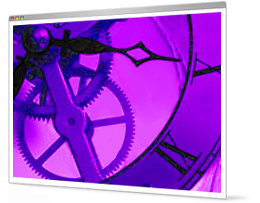My UPD8
You need to login before you download the free activities. You can register here.
- The Centre for Science Education
- The Association for Science Education
- Partners
- Part of ASE online
The atomic clock at 50

Type: Activity
Learning Strategy: Problem solving
Topic: Sound
Invented in Britain 50 years ago, the atomic clock is the silent hero of contemporary communications. It is vital to the smooth running of mobile phones, TV networks, the national grid and the Global Positioning System (GPS). In this activity, students see that caesium atoms in atomic clocks – as well as musical instruments, swings and wine glasses – all have their own natural frequencies. They use the concepts of frequency, amplitude and resonance to answer letters to a teen magazine about paranormal parents and things that rattle in the kitchen!
Published: 9th June 2005
Reviews & Comments: 2
Learning objectives
Students will use ideas about frequency, amplitude and resonance to explain a variety of everyday observations.
Try the activity
Please login to download activities
Curriculum link
8L sound and hearing� Sounds are the result of vibrations
� Use scientific language to describe sound waves
� Sounds with a high pitch have a high frequency
� Sounds with a high amplitude are loud
Running the activity
Show page 1 (either projected or as an OHT) and ask students to guess what was invented 50 years ago. Then show page 2, which tells them the answer and gives some amazing information about atomic clocks, including the fact that they measure tiny time intervals by counting caesium atom vibrations. Atomic clocks are accurate to the nearest nanosecond – equivalent to losing or gaining one second in about 33 years!
Page 3 is a guide to frequency, amplitude and natural frequency, using musical instruments, a swing and a breaking wine glass as examples. You could choose students to read this page aloud, taking the parts of the different objects and 'vibrating' their bodies appropriately! Real demonstrations with an oscilloscope would also fit in well here, as well as rubbing a finger on a wine glass to demonstrate resonance.
Each small group needs a copy of page 4. Ask students to discuss or write scientific answers to the letters.
Web links
News links
- BBC news
- This site tells of the invention in 1943 of the atomic clock based on caesium.
- Saltford University
- Look here for a description – and video – of a successful attempt to break a glass using resonance.
- Ketchum
- This site has information and film clips about the collapse of the Tacoma Narrows bridge, caused by wind of just the right frequency making it resonate.
Reviews & Comments
Write your online review to share your feedback and classroom tips with other teachers. How well does it work, how engaging is it, how did you use it, and how could it be improved?
Water for all
Mar 31st, 2008

Did this with a Year8 class. They all enjoyed the presentation part. Were a bit slow to read about the microbesin depth so ranking them was useful as it also required some discussion about why and how they made decisions.
Reviewer: emer mc dermott
Atomic clock at 50
Jun 20th, 2005

I used this with my Y8 class,excellent for discussion and groupwork
Reviewer: Doris Evans

200 lessons and assessments from as little as £4.95
Related Activities
Physics / Sound
QCA / 8L Sound & hearing
Learning Strategy / Problem solving
- Rough Science 1: Find water
- Rough Science 2: Communication
- Rough Science 3: Spacesuit challenge
- Rough Science 4: Crater impact
- Rough Science 5: Survival
- Rough Science 6: Rocket lander challenge
- Gold
- Snow Blanket
- Solar Car Challenge
- Pirates treasure mystery
- Cracking da Vinci's other code
- Time raiders - death of a mummy
- Vanished - a blitz mystery
- Levitating train mystery